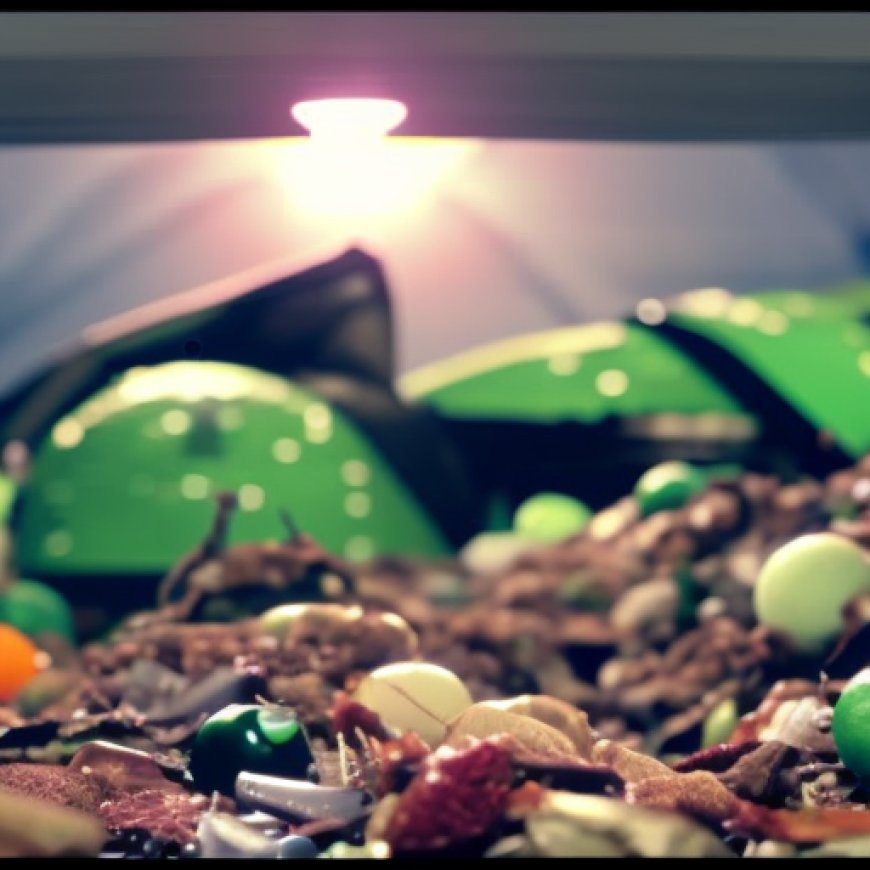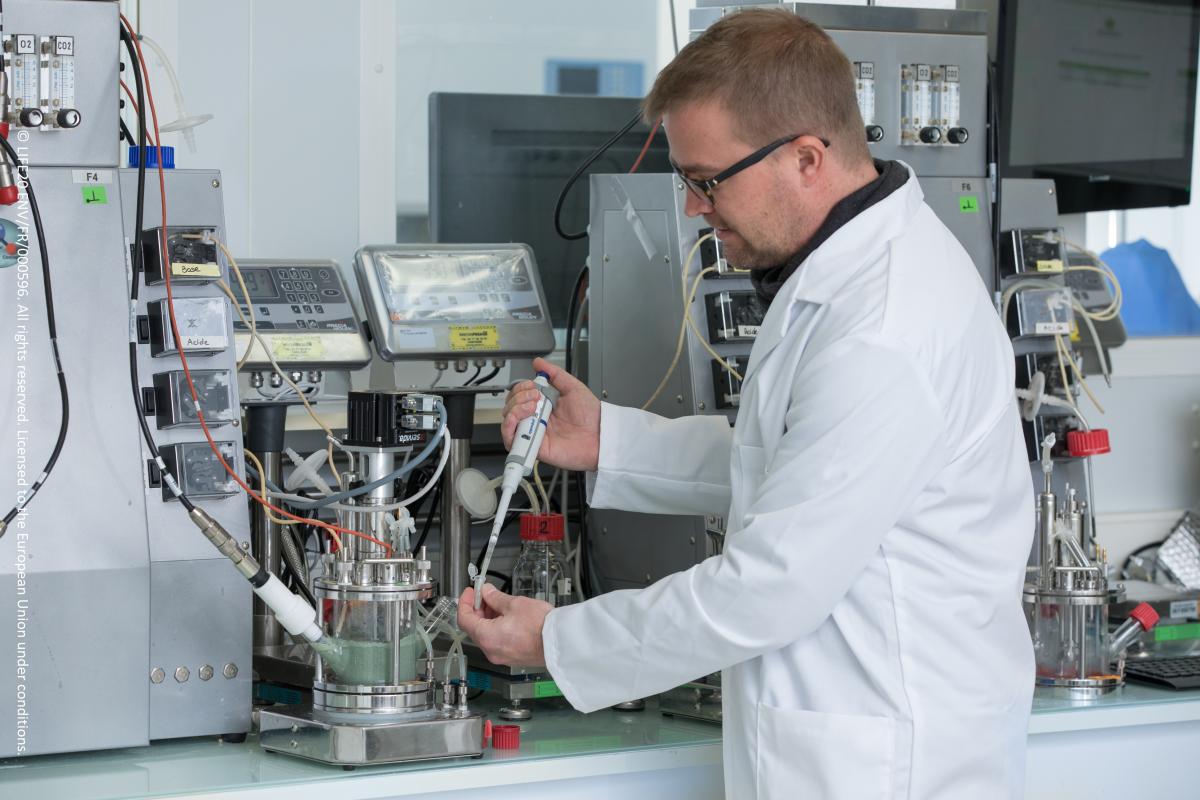New LIFE for waste plastic
New LIFE for waste plastic CINEA


A Pioneering Enzymatic Recycling Process for Plastic and Textile Waste

A pioneering biological recycling process which uses naturally occurring enzymes to transform plastic and textile waste into new products could revolutionize the circular economy.
The Sustainable Development Goals (SDGs)
- SDG 12: Responsible Consumption and Production
- SDG 14: Life Below Water
- SDG 15: Life on Land
The new bio-industrial process, known as enzymatic recycling, allows PET (polyethylene terephthalate) waste to be made into recycled and recyclable products with no loss of quality. Carbios, the French technology company behind the breakthrough, says they are ‘the first to have developed industrial biological processes bringing plastic and textiles into the circular economy.’
The Urgent Need for PET Circular Recycling
PET circular recycling is urgently needed. Currently, less than 40 percent of the plastic waste generated in the EU is recycled. More than 14 million tonnes of PET products are consumed each year, around half of which is incinerated and a quarter dumped in landfill. Hardly any PET textile waste is recycled. Until now, conventional thermomechanical processes have been limited because they can only deal with clear plastic, while complex and soiled plastics are very difficult or impossible to recycle.
The LIFE CYCLE OF PET Project
The EUR 3.3 million LIFE CYCLE OF PET project represents a significant leap forward in plastic recycling. Carbios – the project’s coordinating beneficiary – has been operating a demonstration plant in Clermont-Ferrand, central France, since 2021, using an enzyme known as a PET hydrolase – modified to work faster and at higher temperatures, breaking down plastic at the molecular level.
The Role of Enzymes in Enzymatic Recycling
Enzymes are complex molecules, or proteins, which can speed up chemical reactions. As the journal Nature reported at the time, ‘this highly efficient, optimized enzyme outperforms all PET hydrolases reported so far.’ LIFE CYCLE OF PET uses this enzyme which biologically ‘depolymerises’ PET waste, including textiles such as polyester. The resulting new polymers are as good as those used in virgin petrochemical plastics.
The Future of PET Recycling
‘It’s a real breakthrough in the recycling and manufacturing of PET,’ says Dr Saleh Jabarin, Distinguished Professor at the University of Toledo, Ohio who advised the project. ‘Thanks to the innovative technology developed by Carbios, the PET industry will become truly circular, which is the goal for all players in this industry, especially brand-owners, PET producers and our civilization as a whole.’
Now plans are underway to scale up the demonstration plant into a full-scale industrial circular economy. ‘We have demonstrated our ability to enzymatically recycle complex waste to produce new bottles and fibers and have proven the robustness of our process,’ says Emmanuel Ladent, CEO of Carbios. ‘The success of this project is a springboard for a sustainable future and an introduction of plastics and textiles into a true circular economy.’
SDGs, Targets, and Indicators
| SDGs | Targets | Indicators |
|---|---|---|
| SDG 12: Responsible Consumption and Production | Target 12.5: By 2030, substantially reduce waste generation through prevention, reduction, recycling, and reuse | – Percentage of plastic waste recycled – Percentage of textile waste recycled |
| SDG 9: Industry, Innovation, and Infrastructure | Target 9.4: By 2030, upgrade infrastructure and retrofit industries to make them sustainable, with increased resource-use efficiency and greater adoption of clean and environmentally sound technologies and industrial processes | – Number of bio-industrial processes implemented for recycling plastic and textile waste |
1. Which SDGs are addressed or connected to the issues highlighted in the article?
SDG 12: Responsible Consumption and Production
The article discusses the need for PET circular recycling and the current low recycling rates for plastic waste in the EU. SDG 12 aims to promote sustainable consumption and production patterns, including waste reduction and recycling.
SDG 9: Industry, Innovation, and Infrastructure
The article highlights the breakthrough in enzymatic recycling technology by Carbios, which represents an innovation in the plastic recycling industry. SDG 9 focuses on promoting sustainable industrialization and fostering innovation.
2. What specific targets under those SDGs can be identified based on the article’s content?
Target 12.5: By 2030, substantially reduce waste generation through prevention, reduction, recycling, and reuse
The article emphasizes the need to increase PET recycling rates and reduce the incineration and landfilling of PET products. Achieving this target would require improving recycling technologies and processes.
Target 9.4: By 2030, upgrade infrastructure and retrofit industries to make them sustainable, with increased resource-use efficiency and greater adoption of clean and environmentally sound technologies and industrial processes
The article discusses the enzymatic recycling process developed by Carbios, which represents an upgrade in the recycling infrastructure and an adoption of a clean and environmentally sound technology for plastic and textile waste recycling.
3. Are there any indicators mentioned or implied in the article that can be used to measure progress towards the identified targets?
The article mentions or implies several indicators that can be used to measure progress towards the identified targets:
– Percentage of plastic waste recycled: The article states that currently less than 40% of plastic waste generated in the EU is recycled. Increasing this percentage would indicate progress towards Target 12.5.
– Percentage of textile waste recycled: The article mentions that hardly any PET textile waste is recycled. Tracking the percentage of textile waste recycled would provide insights into progress towards Target 12.5.
– Number of bio-industrial processes implemented for recycling plastic and textile waste: The article highlights the enzymatic recycling process developed by Carbios. Monitoring the number of similar bio-industrial processes implemented would indicate progress towards Target 9.4.
4. SDGs, Targets, and Indicators
| SDGs | Targets | Indicators |
|---|---|---|
| SDG 12: Responsible Consumption and Production | Target 12.5: By 2030, substantially reduce waste generation through prevention, reduction, recycling, and reuse | – Percentage of plastic waste recycled – Percentage of textile waste recycled |
| SDG 9: Industry, Innovation, and Infrastructure | Target 9.4: By 2030, upgrade infrastructure and retrofit industries to make them sustainable, with increased resource-use efficiency and greater adoption of clean and environmentally sound technologies and industrial processes | – Number of bio-industrial processes implemented for recycling plastic and textile waste |
Behold! This splendid article springs forth from the wellspring of knowledge, shaped by a wondrous proprietary AI technology that delved into a vast ocean of data, illuminating the path towards the Sustainable Development Goals. Remember that all rights are reserved by SDG Investors LLC, empowering us to champion progress together.
Source: cinea.ec.europa.eu

Join us, as fellow seekers of change, on a transformative journey at https://sdgtalks.ai/welcome, where you can become a member and actively contribute to shaping a brighter future.







